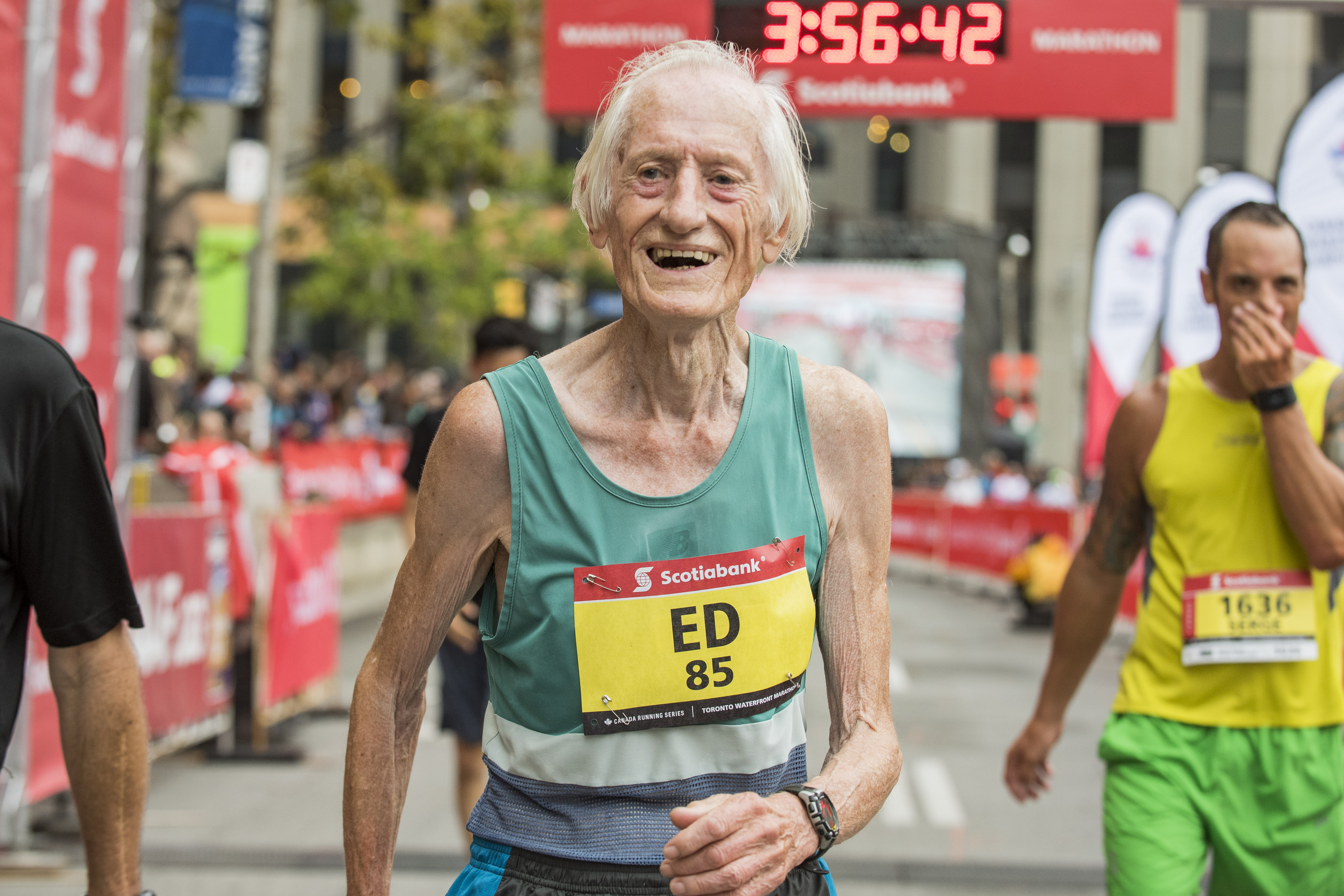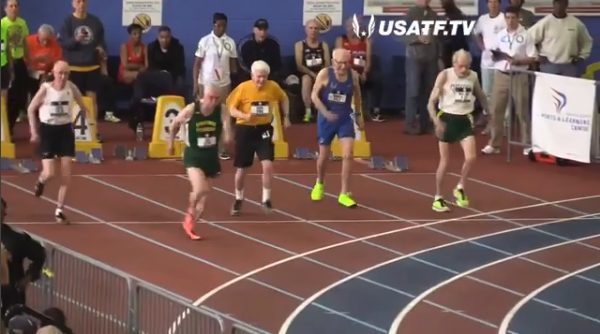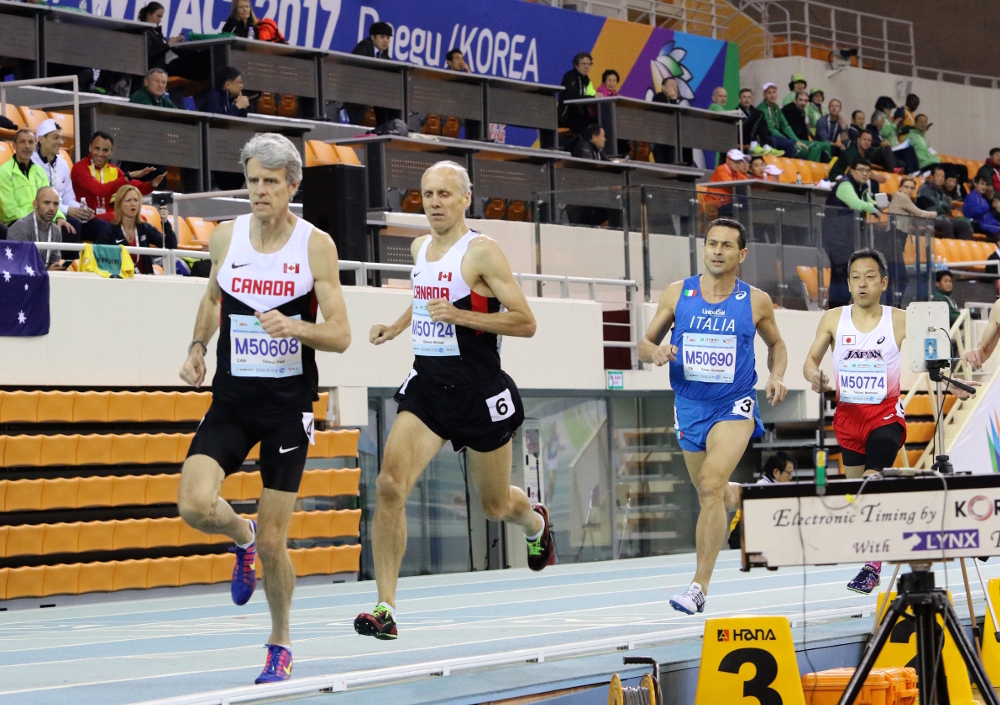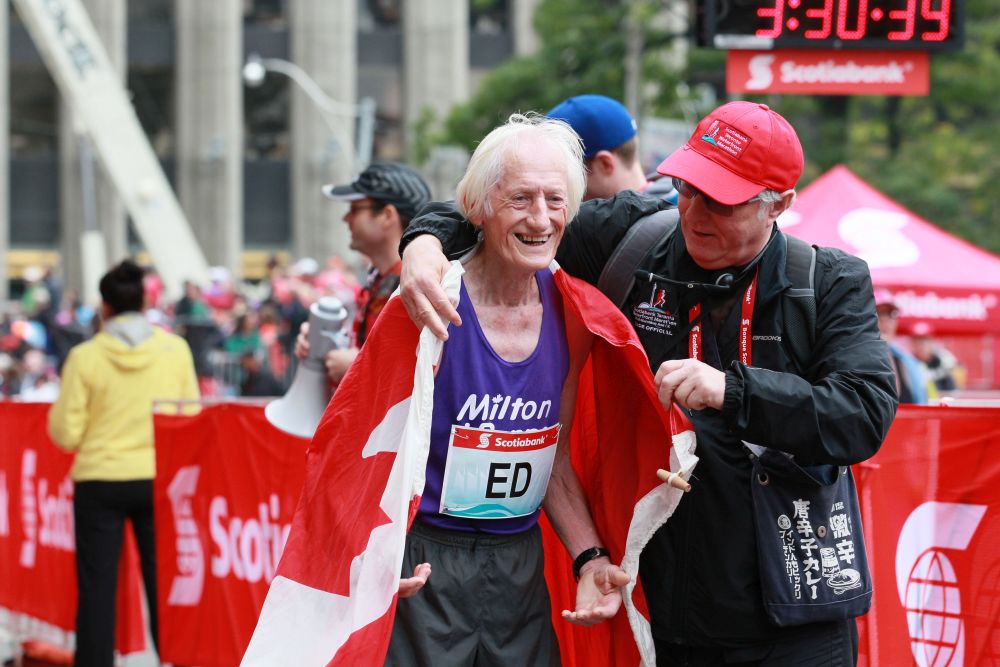Age grading: how masters runners level the playing field
Age grading gives us a way to appreciate just how good the extraordinary performances by seniors really are


If you’re a masters runner who can’t shake a creeping sense of disappointment with your running performance as you age, take heart: the science of age grading allows you to see your results corrected for your age and gender, as if you were still in your prime running years.
Seeing that 3:40 marathon suddenly turn into a 3:10 will definitely put a spring in your step. So how does it work, exactly?

USATF and World Masters Athletics (WMA) produce tables based on their calculations of the relationship between top international performances at different distances by athletes of different ages. The far left column is the athlete’s age, and the distances are across the top.
The table will give you a number (your age-grading factor) by which to multiply your actual time at any distance, based on your age and gender, to get your age-graded time. This is how fast you would have run, minus the natural slowing effect of age.
So, for example, according to the latest tables created in 2015, a 56-year-old woman would multiply her marathon time by 0.8136 to get her age-graded time. If she ran a 3:53 marathon, that makes her age-graded time 3:10. (Sounds much better, as I’m sure you’ll agree.)

Age grading also gives running clubs and other organizations a handy tool for letting athletes of different ages compare their results as if they were the same age. It levels the playing field, so to speak. (Keeps the young ‘uns in their place.) It is also sometimes used by track clubs to equalize young women’s performances with young men’s.

There are a variety of calculators available online that do the math for you, but the most reliable way to find your age-graded result is to consult the tables for the correct age factor for your age, gender and distance, and do the math. (Don’t forget that seconds are not tenths of a minute, so you should convert a 5K time into total seconds, or a marathon time into total minutes, before doing the calculation. Then you can convert the decimals back into minutes or seconds afterwards, by multiplying by 60.)
RELATED: Ed Whitlock’s age-graded time may have nearly won the Toronto Waterfront Marathon
Age grading also gives us a way to appreciate just how good the extraordinary performances by seniors like the late Ed Whitlock really were. Whitlock set age-group records in his 70s and 80s. But not only did his time of 3:56 in his final marathon (the 2016 Scotiabank Toronto Waterfront Marathon) break the 85+ world record by almost 40 minutes, his age-graded time is a blistering 2:08:57, only 30 seconds off Philemon Rono’s winning time.
You can download the 2015 Masters Road Age Graded tables here.


